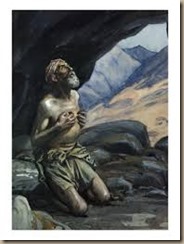 There are many distinct species of the “I’m just an ordinary guy, not a wine snob” poseurs in the press. Right alongside articles about “wine tasting is nonsense/wine quality doesn’t exist” are articles whining about tasting notes and obscure wine descriptions.
There are many distinct species of the “I’m just an ordinary guy, not a wine snob” poseurs in the press. Right alongside articles about “wine tasting is nonsense/wine quality doesn’t exist” are articles whining about tasting notes and obscure wine descriptions.
Food and drinks writer John Mariani is one of the more reliable producers of the genre who can always be counted on to sneer at anyone who takes wine seriously. In “Some Things Wine Should Never Be” he takes wine writers to task for their outlandish descriptors:
And in the silly 2013 documentary movie SOMM, which follows four candidates studying to pass the Master Sommelier exams, one of them swirls and sniffs his wine, then pronounces, “I’m getting a whiff of . . . freshly cut garden hose.” One has to wonder if freshly cut garden hose is something a wine should or should not smell like.
Indeed, wine should not smell like a garden hose, freshly cut or not. In fact I’ve come across wines that smell like a garden hose—rubber-like with chemical notes—it’s not a compliment. The problem is with the wine, not the description. If a wine smells like garden hose why not say so?
He goes on to rant about descriptions from fiction—James Thurber and Evelyn Waugh—that no one has used since, well, Waugh in 1945 and Thurber in 1937. Thurber famously published a cartoon with the caption:
It’s a naïve domestic little Burgundy without any breeding, but I think you’ll be amused by its presumption.
The problem with this is not that wines can’t be poorly cultivated or from lesser known producers. It’s that we don’t talk about breeding anymore as a general synonym for cultivation and we no longer think something lacking aristocratic origins is presumptuous. Come to think of it, we probably didn’t think that way in 1937 which is in part why Thurber’s caption is funny.
As to Waugh in Brideshead Revisited, even in 1945 when the book was published these would be metaphors suffering and near death:
It is a little, shy wine, like a gazelle.”
“Like a leprechaun.”
“Dappled, in a tapestry meadow.”
“Like a flute by still water.”
“And this is a wise old wine.”
“A prophet in a cave.”
“And this is a necklace of pearls on a white neck.”
“Like a swan.”
“Like a unicorn.
Leprechauns, prophets in a cave, a necklace of pearls on a white neck? Which century are we in? They work in the novel because Brideshead is about nostalgia for the landed gentry of the 19th Century. It’s not a critique of the use of metaphor.
Mariani really needs to update his material.
He gets a little closer to currency when he complains about musical metaphors:
There used to be a wine magazine in which each bottling was compared to a rock-and-roll performer, album or song—a big zinfandel to Muddy Waters’s “Hoochie Koochie Man,” a red Burgundy to Sade’s “Smooth Operator” and a California Chardonnay to the Eagles’s “Peaceful Easy Feeling.” The magazine lasted about four issues.
As you might imagine, these seem like perfectly good metaphors to me. Wines have textures, weight, and movement on the palate that can easily be compared to musical compositions. There is after all substantial scientific evidence for cross-modal perception—that is, a capacity to recognize similar qualities in different sensory modalities. In fact many cognitive psychologists think cross-modal metaphors are crucial to the way our brains function. There is ample evidence that wine and music pairing is a real phenomenon. He never explains what makes wine and music comparisons inapt. I guess if you have to ask….
As to what sort of wine descriptions Mariani prefers it isn’t clear. He seems to prefer insults:
The best were succinct, like Bette Davis, who once said, “Never, never trust anyone who asks for white wine. It means they’re phonies.” Some were blunt, like D. H. Lawrence, who said, “The Spanish wine, My God, it is foul, catpiss is champagne compared, this is the sulpherous urination of some aged horse.”
It isn’t obvious why “horse urine” is preferable to “wise old wine” as a descriptor. But since he’s so fond of insults let me add that “prophet in a cave” is a good metaphor for Mariani’s musings.
Metaphor is one of the most powerful means of communicating that we have. Why wine writers are uniquely forbidden to use it is beyond me.
